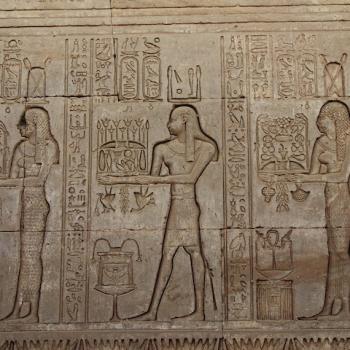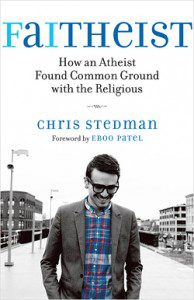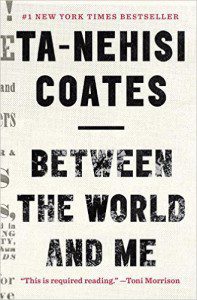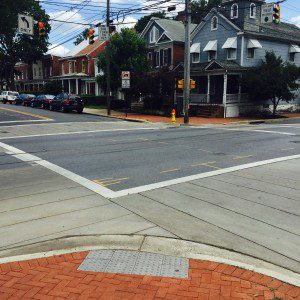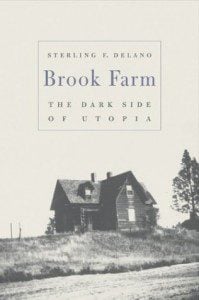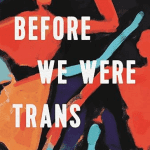Most people are more familiar with the term transgender than with the term cisgender. The term transgender came first, adding the Latin prefix “trans-” (meaning, “across from” or “on the other side of”) to the word gender to indicate a person, whose gender identity or gender expression does not match their biological sex.
Cisgender was coined as a complementary term from the Latin prefix cis-, (meaning “on this side of”), indicating a person, whose gender identity and gender expression for the most part match the sex they were assigned at birth. Speaking for myself, owning the label cisgender helps me resist the all too common perception that transgender folk are deviant from an alleged “norm” instead of seeing both cisgender and transgender as two (among many) legitimate points on a wide spectrum than spans the diverse human condition.
Along these lines, regarding the limitations of even the growing acronym L.G.B.T.Q.I.A. (Lesbian, Gay, Bisexual, Transgender, Queer/Questioning, Intersex, Asexual/Ally), one freshman at Columbia University was quoted in a New York York Times article that:
We have our lesbians, our gays, bisexual, transsexual, queer, homosexual, asexual, pansexual. omnisexual, trisexual, agender, bi-gender, third gender, transgender, transvestite, intersexual, Two-spirit, Hijra, polyamorous, undecided, questioning, other, human.
And as part of coming to see all those labels as various places where we human beings can find ourselves in all our gender and sexual diversity, I invite you to click on this link to view “The Genderbread Person.” This chart is a playful attempt used in a recent UU “Transgender Inclusion” webinar to visualize how the various spectrums interrelate regarding Gender Identity, Gender Expression, Biological Sex, and Sexual Attraction.
Notice, first that these four different attributes are each on a different and non-intersecting spectrum, and can thus manifest themselves in many diverse varieties in various individuals:
- Gender Identity is in your mind: inside your head, do you think of yourself as more of a woman or man?
- Gender Expression is how you appear externally. In your clothes and behavior, do you present yourself to others as more masculine or more feminine, androgynous or gender neutral?
- The third category, attraction, is in your heart: are you are sexually attracted to men/males/masculinity, women/females/femininity, both, or neither?
- Finally, there is a spectrum regarding Biological Sex.
As mentioned earlier, transgender individuals identify as male or female in a way that differs from what is assigned to them by biological science. And intersexuals have chromosomal genotypes and sexual phenotypes other than a simple XY-male and XX-female. According to the Intersex Society of North America, “If you ask experts at medical centers how often a child is born so noticeably atypical in terms of genitalia that a specialist in sex differentiation is called in, the number comes out to about 1-in-1500 to 1-in-2000 births. But a lot more people than that are born with subtler forms of sex anatomy variations, some of which won’t show up until later in life.”
As a more concrete example of why all of this matters deeply, some of you may recall that at this summer’s annual UU General Assembly (which was in Louisville this past June), a decision was made to be more welcoming to transgender and/or gender non-conforming people by having many multi-stall bathrooms designated as Gender Neutral. And in the orientation email sent out in advance to all GA participants, perhaps the most important part was the note that, “In all restrooms we ask you to trust that individuals know which restroom is most comfortable and appropriate for them.”
Having used quite a few of those Gender Neutral restrooms while in Louisville, I assure you it turns out that “Gender Neutral” bathrooms are pretty much just bathrooms. In contrast, as the signs posted in the Gender Neutral bathrooms highlighted, Gender-specific bathrooms (which are ubiquitous in our society) can be incredibly dangerous spaces for transgender and gender non-conforming individuals: “the use of public restrooms can come with emotional and physical harassment, deep discomfort, risk of arrest for being in the ‘wrong’ bathroom or even physical violence and death.”
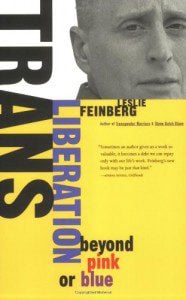 I should also note that this past Friday, October 11 was National Coming Out Day, which celebrates our LGBTQIA friends, family members, and neighbors who have “braved fears of discrimination, rejection, hatred, and violence to lead open lives of authenticity.” And on National Coming Out Day, I had a chance to read a book I’ve been meaning to read for a while: Leslie Feinberg’s TransLiberation: Beyond Pink and Blue. Immediately after finishing the book, I wrote these words, which are directly inspired and adapted from the book:
I should also note that this past Friday, October 11 was National Coming Out Day, which celebrates our LGBTQIA friends, family members, and neighbors who have “braved fears of discrimination, rejection, hatred, and violence to lead open lives of authenticity.” And on National Coming Out Day, I had a chance to read a book I’ve been meaning to read for a while: Leslie Feinberg’s TransLiberation: Beyond Pink and Blue. Immediately after finishing the book, I wrote these words, which are directly inspired and adapted from the book:
The truth that gender is a spectrum that doesn’t always match the biological sex one is assigned at birth is a truth that is as clear to me as every little boy I’ve met who was ever teased for being a sissy or every little girl I’ve have met who has ever been derisively called a tomboy.
The need for greater gender freedom in our society is, likewise, as clear to me as the need to create a world in which no child is every again made fun of for their natural gender expression — whether masculine, feminine, both, or somewhere in between.
That such a gender liberated world is possible is as clear to me as the fact that we already live in a world in which the “race box” is optional on many forms. The trans-liberation movement challenges us that the “gender box” (and the gender lens through which we are taught to see the world) should also be optional, eliminated, or divided into many more options.
May we be part of creating a world in which masculine and feminine are as interchangeable in regard to one’s biology as the choice of whether to speak Spanish, English, or a combination of the two — or, as my bi-cultural childhood friends from Miami used to say: Spanglish.
Related Resources
- Transgender 101: A Simple Guide to a Complex Issue by Nicholas M Teich (Columbia University Press, 2012, 160 pages).
- The 7 Questions Project: http://wehappytrans.com/qa/7-questions-stephen/
- Tomboy: a 2011 French film with incredible child acting: “Uncomfortable living as a girl, 10-year-old Laure decides to spend her childhood as Michael. When Michael’s family moves to rural France, the child wins friends and comes to understand the complexities of gender.”
- Transgender 101: http://www.uua.org/lgbtq/identity/25348.shtml
- PBS NOVA special on “The Intersex Spectrum”: http://www.pbs.org/wgbh/nova/body/intersex-spectrum.html.
- Abigail Tarttelin, Golden Boy: A Novel:
The Walker family is good at keeping secrets from the world. They are even better at keeping them from each other. Max Walker is a golden boy. Attractive, intelligent, and athletic, he’s the perfect son, the perfect friend, and the perfect crush for the girls in his school. He’s even really nice to his little brother. Karen, Max’s mother, is a highly successful criminal lawyer, determined to maintain the façade of effortless excellence she has constructed through the years. Now that the boys are getting older, now that she won’t have as much control, she worries that the façade might soon begin to crumble. Adding to the tension, her husband, Steve, has chosen this moment to stand for election to Parliament. The spotlight of the media is about to encircle their lives. The Walkers are hiding something, you see. Max is special. Max is different. Max is intersex. When an enigmatic childhood friend named Hunter steps out of his past and abuses his trust in the worst possible way, Max is forced to consider the nature of his well-kept secret….
The Rev. Dr. Carl Gregg is a trained spiritual director, a D.Min. graduate of San Francisco Theological Seminary, and the minister of the Unitarian Universalist Congregation of Frederick, Maryland. Follow him on Facebook (facebook.com/carlgregg) and Twitter (@carlgregg).
Learn more about Unitarian Universalism:
http://www.uua.org/beliefs/principles





